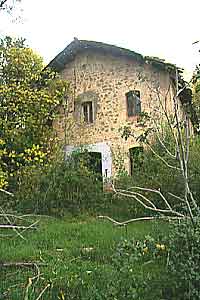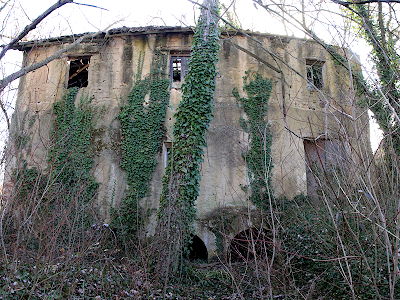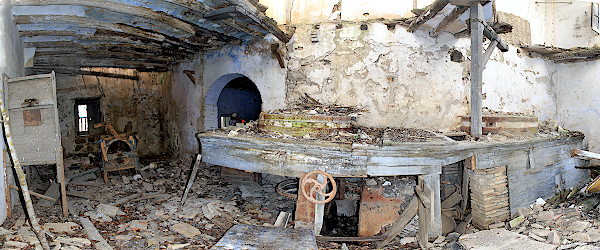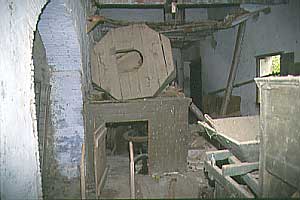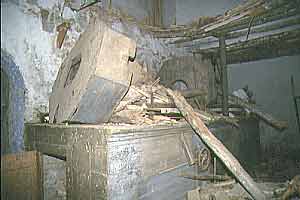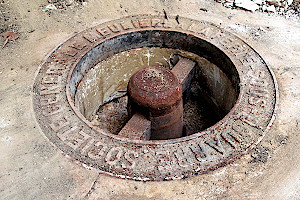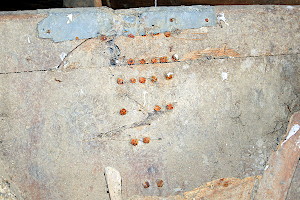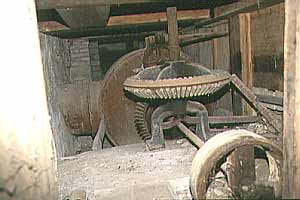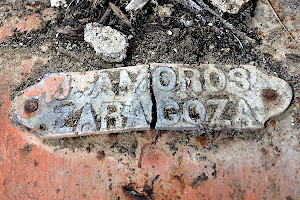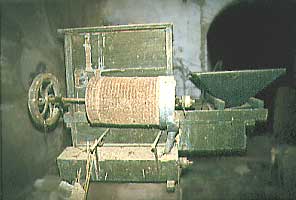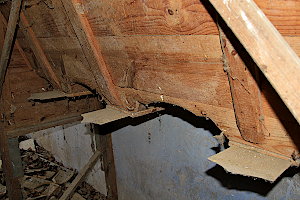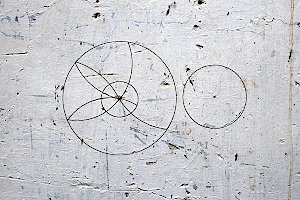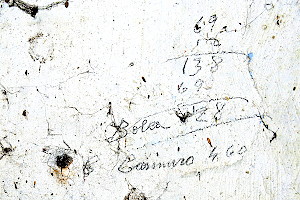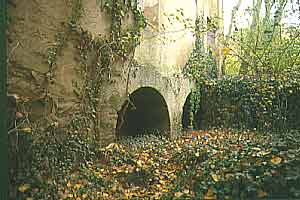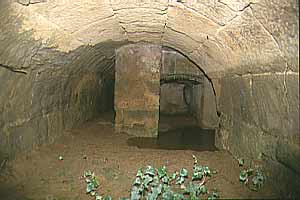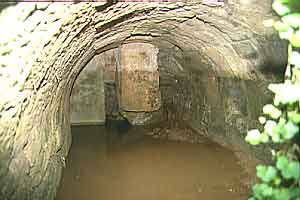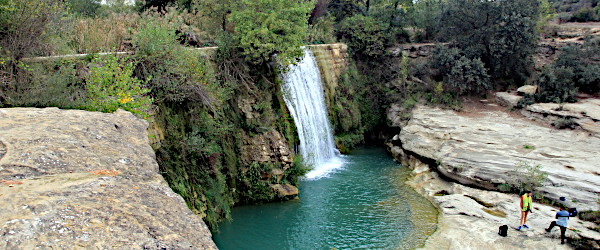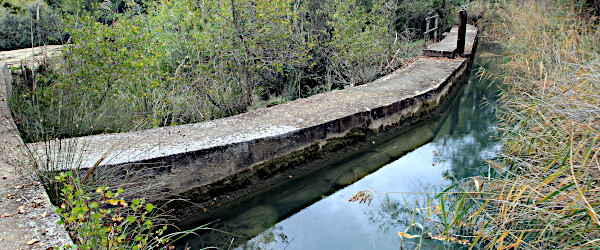Path: Introduction -
Visit the mills; catalogue - Castillazuelo (San Marcos)

Mills in Alto Aragón - harinero
Castillazuelo - San Marcos

Castillazuelo is situated
in the valley of the Río Vero near Barbastro. Both should be on any map.
From Barbastro's city center take the road towards Adahuesca and Alquézar.
Before you reach Castillazuelo take the branch to Salas Bajas and Naval.
You'll soon find a sand road leading down into the valley at your left.
Drop the car and walk this road down towards a bush of high trees hiding the
mill. Between our visits, the mill has lost most of its roof and that is detrimental to
what remains of the equipment. The mill receives its water from the Río Vero and the acequia San Marcos.
Pictures: 30.x.2002, 01.iii.2019, 22.x.2023
